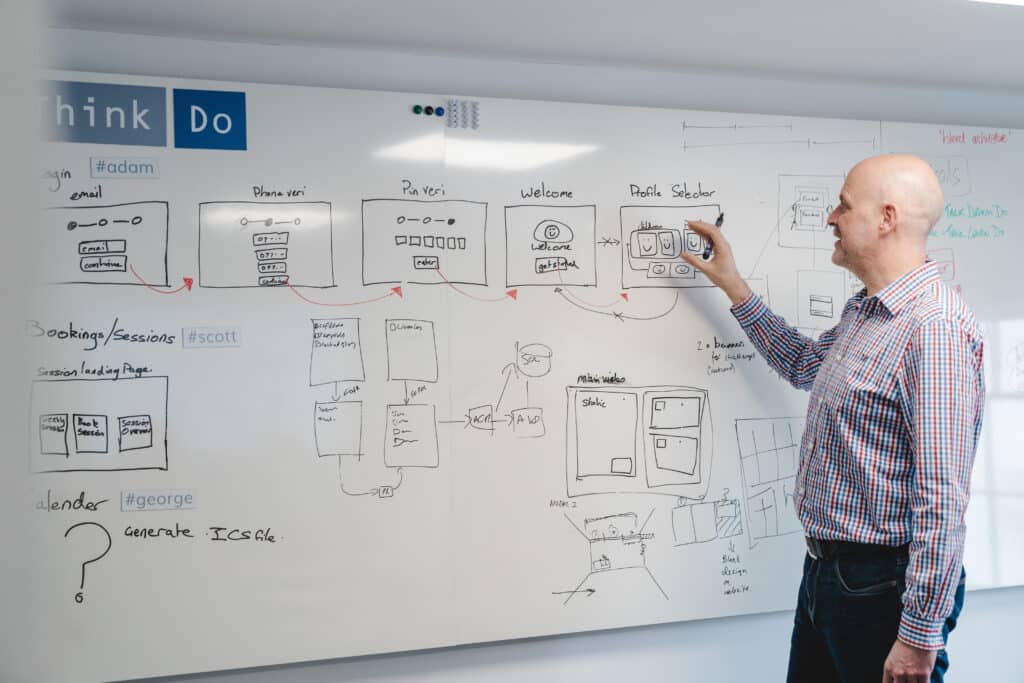Evaluating AI Tools Using a Task-Based Framework to Optimise Productivity

We’ve all heard about how AI can improve productivity, boost work quality, and open doors to new business opportunities. But the reality is that these kinds of successful results rely on considerable preparation and careful implementation.
According to recent surveys, 63% of respondents in successful businesses say that the implementation of generative AI is a high or very high priority, even though 91% don’t feel very prepared to do so responsibly.1
Whether you’re looking to develop a unique AI solution or implement a customisable off-the-shelf tool like Microsoft Copilot, following a clear implementation framework will help you avoid potentially costly risks, such as misinformation or security weaknesses.2
In this article, I’ll outline how task-based frameworks can be used to streamline AI implementation and optimise productivity in your business.
Suggested reading: Education publishing is one of the largest growing sectors for AI use. Read the free eBook, ‘AI Use Cases for Education Publishers’, to discover how AI can be used to optimise educational learning outcomes.
The importance of the right AI tools
What the ‘right’ AI tool looks like will be entirely subjective to your business and its needs. As Cassie Kozyrkov, Chief Decision Scientist at Google, aptly states:
“Don’t waste time on AI for AI’s sake. Be motivated by what it will do for you, not by how sci-fi it sounds.”3
The first step in the AI implementation process involves choosing between an off-the-shelf or custom AI solution:
Off-the-shelf AI tools
Off-the-shelf AI tools vary significantly in terms of their complexity, customisability, and the sophistication of the underlying AI model. On the whole, off-the-shelf tools have the benefits of:
- High accessibility: Can be used by people with a range of technical abilities.
- Rapid implementation: Allowing businesses to get their new AI system up and running in just a matter of days.
- Multi-purpose: A single tool can fulfil a variety of business functions, from calendar organisation to live call transcription.
How effective your off-the-shelf AI tool is will depend on which tasks you need it to perform and how customised it is. I generally recommend choosing solutions that offer at least some level of customisation, such as Microsoft Copilot, as this ensures you are not wasting resources on unnecessary functions.
Custom AI solutions
As might be expected, fully custom AI solutions take longer to develop and implement. Businesses will need to streamline and organise their data, employ AI experts to fine-tune their custom model, and adapt their tool on an ongoing basis. The result will be a tool that is:
- Efficient: Designed to perform only the tasks you need it to.
- Personalised: Trained on your business’s data and tailored to your requirements.
- Suitable for long-term use: The tool can be adapted to grow and change alongside your business.
Services such as Microsoft Azure OpenAI provide access to numerous AI models, allowing you to customise your solution without the complexity of developing an AI model from scratch.
Implementing a task-based framework for AI tool evaluation
Approximately 72% of businesses in 2024 have adopted AI in at least one business function, with the most popular use cases being sales and marketing, product and service development, and IT functions.4
Regardless of how other businesses are using AI, the most important question to ask before implementing it yourself is: ‘What tasks would benefit most from intelligent automation?’. To answer this question, you will need to go through preparation, ideation, assessment, prioritisation, and, finally, execution.5 These stages can be more simply distilled into three core steps:
- Task identification
When identifying what functions you want AI to perform, you should focus on tasks that are:
- Time-intensive
- Resource-intensive
- Straightforward, but too complex for standard automation tools
By taking the time to individually identify tasks, you will also identify your core challenges, and, subsequently, their potential solutions.
For example, FundingImpact.AI needed to process vast quantities of data from different sources and use this information to find the most effective means of commissioning resources within communities. By identifying the tasks they needed to perform, including data processing, resource allocation, and impact quantification, they were able to find an off-the-shelf AI solution that suited their needs and implement it to streamline funding distribution.
- AI suitability assessment
Once you have a clear list of the tasks you need to perform, you can move into the assessment and prioritisation stages of the task-based framework. At this point, it may be helpful to work with an AI specialist or technology partner who can advise you on which tasks are best performed by what type of AI system.
Determining whether you need custom AI or an off-the-shelf tool will normally involve the following task-related assessment questions:
- What is the complexity of the task at hand?
- What existing software, if any, is being used to assist with this task?
- How easy or difficult would custom AI integration vs. off-the-shelf AI integration be in this function?
- Are there off-the-shelf AI tools available that could be used to complete this task and/or others?
- Do the challenges that arise from completing this task manually or with traditional automation tools justify the need for AI implementation?
Asking these questions will make it easier to prioritise the tasks that will most benefit from AI use, and understand whether you need a multi-function tool like Microsoft Copilot AI or a more customised solution.
Suggested reading: Read my recent article, ‘Generative AI: Transforming Software & Product Delivery Across Businesses’, to learn more about generative AI tools and the tasks they can perform.
- Trial runs and pilot testing
AI is still very much an emerging technology, with the number of UK-based AI companies increasing by 600% over the last 10 years.6 As such, its implementation will inevitably require trial runs and pilot testing to ensure the final solution is a good fit for your long-term requirements.
A trial run is also important for identifying any weaknesses in your data that may have been missed in the implementation stage, ensuring that you are not at risk of further AI integration challenges down the line.
If you choose to work with a technology partner through the integration process, make sure they offer post-implementation support to assist with adjustments or additions to your new AI system.
Measuring productivity gains from AI integration
Business owners and stakeholders alike expect to see tangible results from their investments. By following a task-based framework, you will already have a clear idea of where these results are likely to be. Measure productivity gains by looking holistically at:
- Performance metrics: How do your core performance metrics differ when using AI compared to without?
- Feedback: What are your employees, customers, and team leaders saying about their experience using your new AI tool?
- Cost-benefit analysis: Depending on whether you’ve chosen custom development or an off-the-shelf tool, you will have varying upfront and ongoing costs. How do these match up to your current and predicted productivity gains?
Discover your best-fit AI solution today
Task-based frameworks are successful because they help you identify your needs and ensure the solution you choose fits these requirements — not the other way around.
With new AI models and tools being released weekly, finding your best fit AI tool can be challenging. Working with an experienced technology partner through the selection and implementation process will ensure you have explored all of your available options and chosen the solution that is well suited to your business.
It’s our mission here at Talk Think Do to support and empower businesses through tailored technology built for long-term use. As a certified Microsoft Solutions Partner, we have experience in data preparation, AI integration, AI maintenance, and more. Work with us to find and implement a custom solution that streamlines your core tasks and boosts productivity across your organisation.
Ready to learn more? Book a free consultation with a member of our expert team today.
1 Implementing generative AI with speed and safety | McKinsey
2 Cyber security risks to artificial intelligence – GOV.UK
3 Applying AI: How to find and prioritize AI use cases
4 The state of AI in early 2024: Gen AI adoption spikes and starts to generate value | McKinsey
Get access to our monthly
roundup of news and insights
You can unsubscribe from these communications at any time. For more information on how to unsubscribe, our privacy practices, and how we are committed to protecting and respecting your privacy, please review our Privacy Policy.
See our Latest Insights
Working as One Team: How Our Business Analysts Bridge Vision and Delivery
When clients partner with us, they often expect engineers and designers. But one of the most powerful roles behind a successful digital product is often less visible: the Business Analyst (BA). At Talk Think Do, BAs aren’t just requirement-gatherers. We’re connectors, between vision and execution, users and features, partners and platforms. In the recent delivery…
Implementing RAG AI Search on On-Premise Files with our AI Search Accelerator
As demand for AI‑powered tools like Microsoft Copilot grows, many organisations are asking the same question: “How can we harness the power of generative AI without moving our sensitive data to the cloud?” In this guide, we’ll explain why Retrieval‑Augmented Generation (RAG) is so effective for on‑premise data and walk through a practical approach using…
Using AI to Strengthen ISO 27001 Compliance
Preparing for our ISO 27001:2022 recertification, and a transition from the 2013 standard, was no small task. As a custom software company handling sensitive client data, we hold ourselves to high standards around security and compliance. But this year, we approached the challenge differently. We built and deployed a custom AI Copilot agent to help…
Legacy systems are costing your business growth.
Get your free guide to adopting cloud software to drive business growth.




